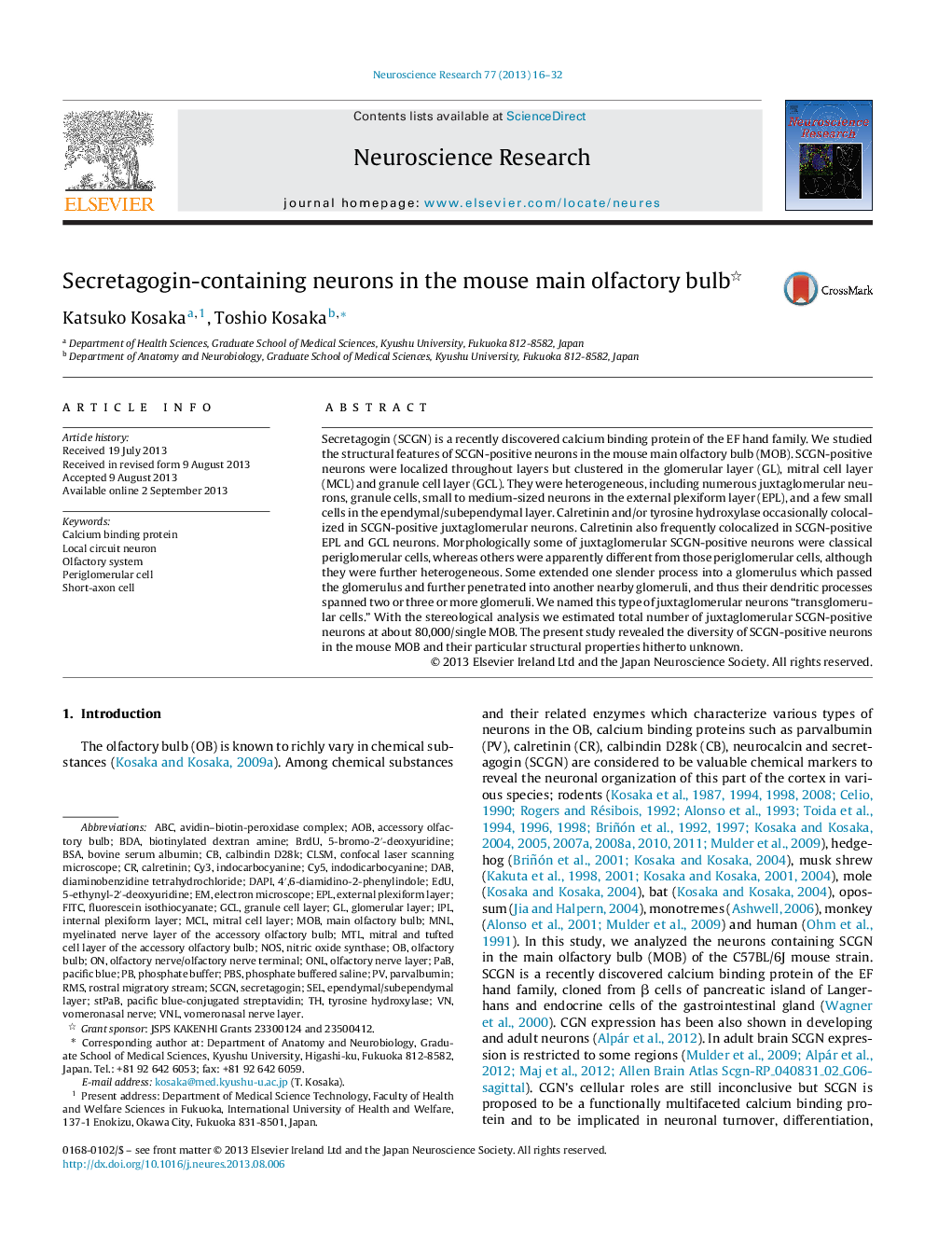| Article ID | Journal | Published Year | Pages | File Type |
|---|---|---|---|---|
| 6286398 | Neuroscience Research | 2013 | 17 Pages |
Abstract
Secretagogin (SCGN) is a recently discovered calcium binding protein of the EF hand family. We studied the structural features of SCGN-positive neurons in the mouse main olfactory bulb (MOB). SCGN-positive neurons were localized throughout layers but clustered in the glomerular layer (GL), mitral cell layer (MCL) and granule cell layer (GCL). They were heterogeneous, including numerous juxtaglomerular neurons, granule cells, small to medium-sized neurons in the external plexiform layer (EPL), and a few small cells in the ependymal/subependymal layer. Calretinin and/or tyrosine hydroxylase occasionally colocalized in SCGN-positive juxtaglomerular neurons. Calretinin also frequently colocalized in SCGN-positive EPL and GCL neurons. Morphologically some of juxtaglomerular SCGN-positive neurons were classical periglomerular cells, whereas others were apparently different from those periglomerular cells, although they were further heterogeneous. Some extended one slender process into a glomerulus which passed the glomerulus and further penetrated into another nearby glomeruli, and thus their dendritic processes spanned two or three or more glomeruli. We named this type of juxtaglomerular neurons “transglomerular cells.” With the stereological analysis we estimated total number of juxtaglomerular SCGN-positive neurons at about 80,000/single MOB. The present study revealed the diversity of SCGN-positive neurons in the mouse MOB and their particular structural properties hitherto unknown.
Keywords
diaminobenzidine tetrahydrochlorideNOSDAPIGCLBDAEPLPABIPLONLCy3DABCy5MNLindodicarbocyanineIndocarbocyaninevomeronasal nerveSCGNVNLvomeronasal nerve layerABCAOBMOBCLSMMTLFITCMCLRMSPBS4′,6-diamidino-2-phenylindole5-bromo-2′-deoxyuridine5-ethynyl-2′-deoxyuridineBSAEdUbovine serum albuminphosphate bufferBrdUbiotinylated dextran aminetyrosine hydroxylaserostral migratory streamSecretagoginSelPeriglomerular cellolfactory systemPhosphate buffered salinefluorescein isothiocyanatemain olfactory bulbaccessory olfactory bulbexternal plexiform layerinternal plexiform layergranule cell layermitral cell layerolfactory nerve layerglomerular layerConfocal laser scanning microscopeElectron microscopeLocal circuit neuronnitric oxide synthaseParvalbuminCalcium binding proteinolfactory bulbCalbindin D28KCalretinin
Related Topics
Life Sciences
Neuroscience
Neuroscience (General)
Authors
Katsuko Kosaka, Toshio Kosaka,
